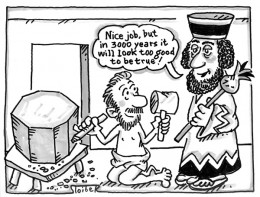Tags
archaeology, art, art crime, cultural heritage, cultural preservation, education, Markham Caerus, new project, outreach, Patreon
Announcing Markham Caerus on Patreon!
When I first timidly started a blog, my mentor stressed that everything on the internet evolves, blogs no exception. And working on A Year in Provenance led both the nature of the blog and the research behind it in unexpected directions. AYIP began with the Markham Caerus project, to study art crime in both fine art and archaeology, and that project has evolved into something bigger and more ambitious, and that new scope needed a new platform. Public education, awareness, and insight are now a major focus, and Markham Caerus has found a new way to achieve that through Patreon. Continue reading




